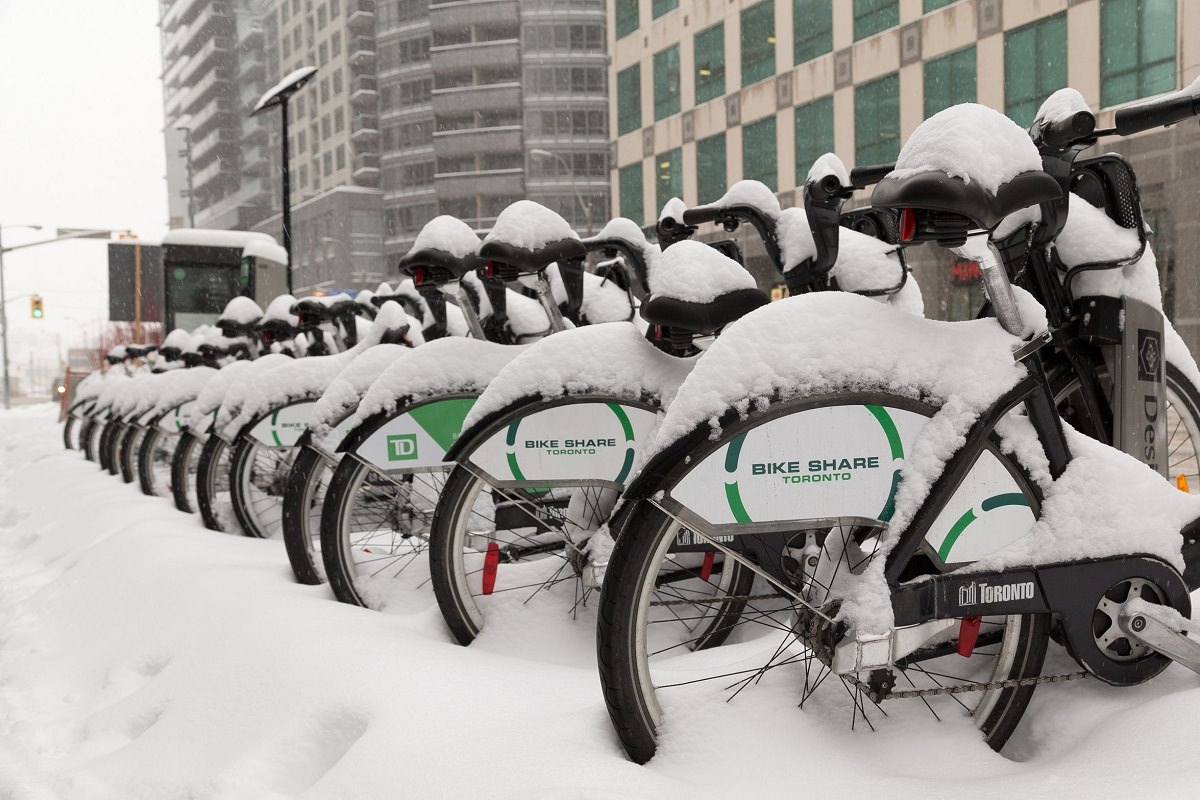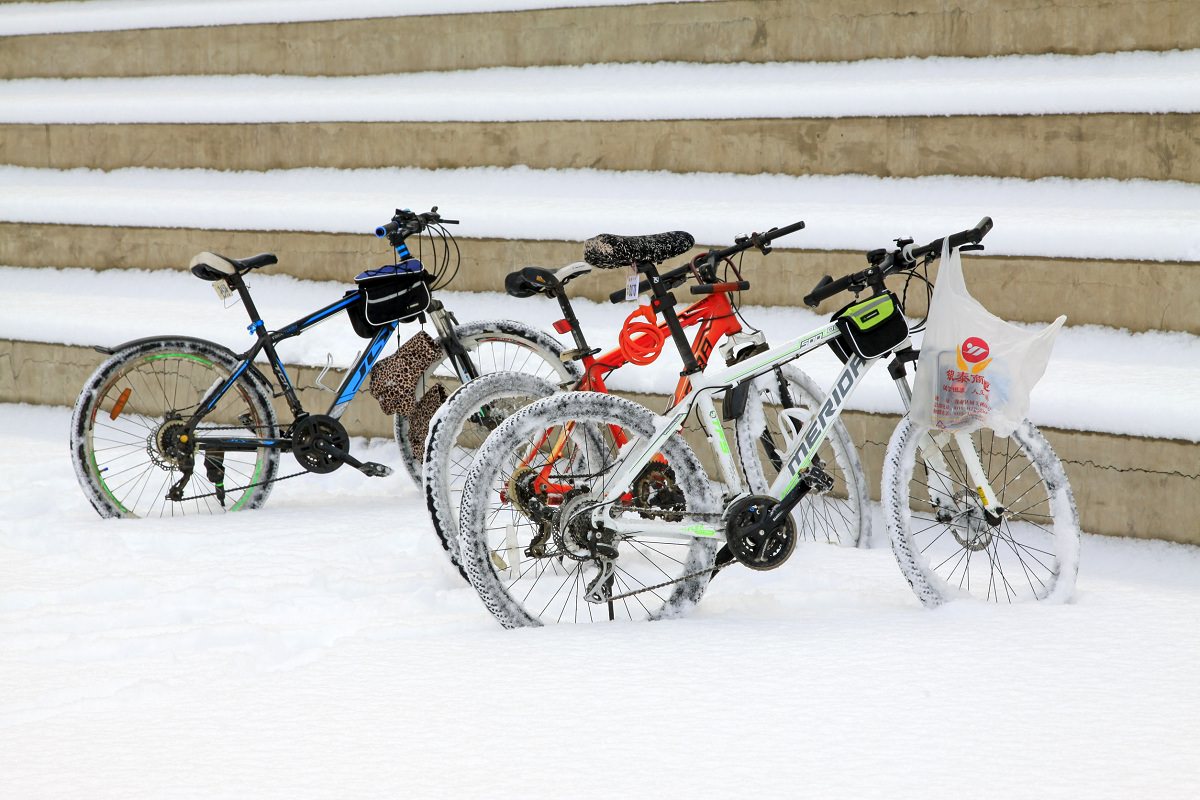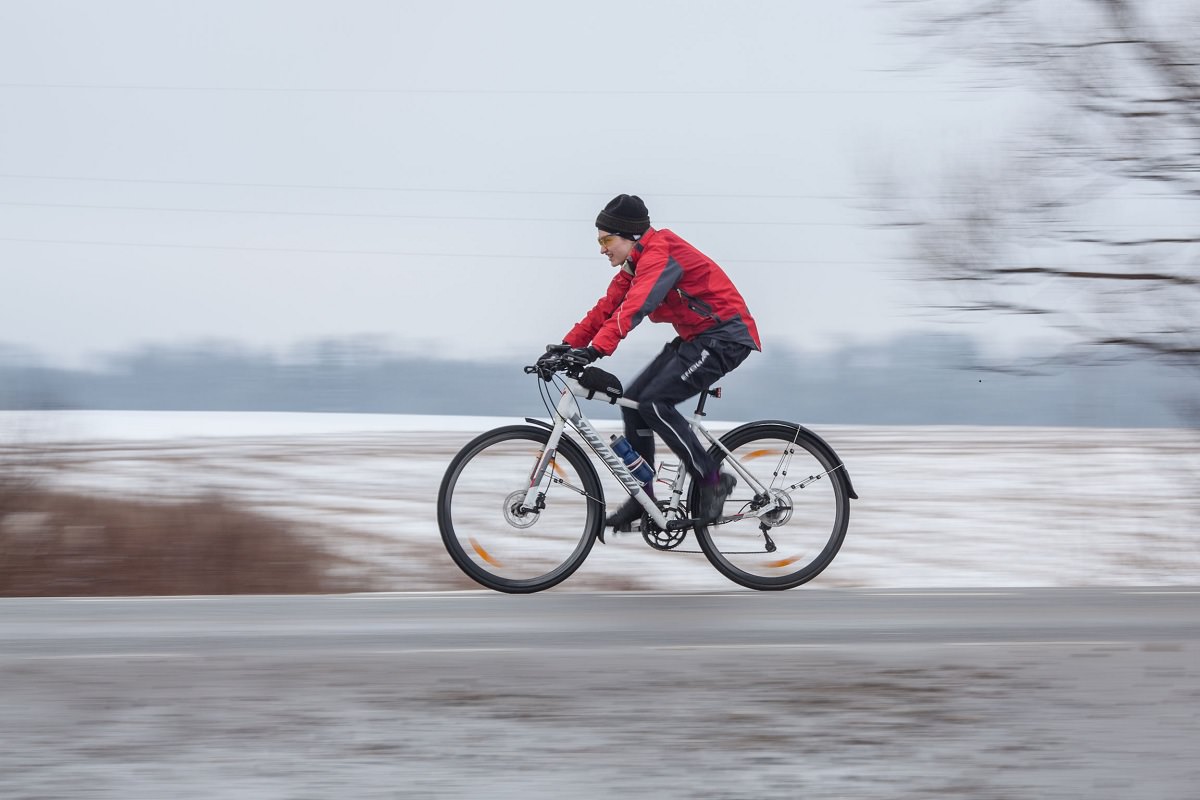Many icebikers end up being rain bikers or snow-melt bikers or in some other way attract a lot of dirty water to the backside of their biking togs. Sooner or later the original idea of fenders dawns on the soggy rider and then the search is on of a good pair, which weighs nothing, looks fairly cool and costs pennies. Ok, so you can’t have that. Just what can you have?
Fenders For Ice And Rain Biking
Below are reviews of various venders. After much discussion on the icebike mailing list it has pretty well been established that some are way better than others.
1. Zefal
Probably the best fenders you can buy in much of the world. Available at any good local bike store or from places like Nashbar.
The regular model has by far the best coverage. It is not meant to be removable and this can present a problem if you do a lot of serious forest trail riding with the bike as sticks get caught under fenders from time to time. These will keep you far drier than any other model commonly available.
“Mountain” version is more readily removable in that it snaps on and off, but that gap at the bottom-bracket means that it will throw a lot more water and grit on your feet, and onto your chain.
2. Planet Bike
PlanetBike makes a like of full coverage fenders called Freddy Fenders and Freddy Fenders Hardcore which are made out of a polycarbonate plastic that will not corrode and is claimed to be unbreakable and suitable for all weather. Mounting hardware is also corrosion-free and suitable for virtually any bike.
The Hardcore model features two mounting stays per side in the rear instead of only one. The front of the Hardcore model also has a Mud Flap at the bottom which is designed to keep your feet dry. They sell for under US$30 (Performance has them for $25).
In the front they provide about 5cm more coverage than the Mt Zefals on the top of the wheel and 8cm on the bottom, and in the back they cover at least 180 degrees, starting between the chainstays.”
Not everyone agrees as to the utility of the mud flaps or the suitability of mounting hardware for use with larger studded tires.
The other gripe is that the “mud flap” on the front is not only too small, but I occasionally hit it with my foot (when pedaling around a 180 degree turn or jerking my handlebars around while trying to stay upright in deep, loose snow) and that causes the flap to get caught by the tire.
Once it gets folded between the tire and the fender, there’s nothing I can do about it except stop and yank it out. The Planet Bike fenders did survive the cold we had here in Minnesota last month.”
3. Pyramid
Pyramid is a importer of lots of different inexpensive cycling components. They also import some very cheap and light fenders similar to the Zefal Mountain.
These snap on and off fairly easily, but have a bit of a coverage problem in the rear. (Too short). On some bikes they work very well, on others they don’t. It all depends on where your seat-stay bridge is located. On some bikes they don’t extend far enough back to prevent slush on your back, and they don’t extend all the way to the Bottom Bracket so that means your feet will get a little gritty. Comes with a front and back fender as a set.
The Pyramid stuff is mostly sold in the LBS, Price about $19
4. Headlands Backscratcher
Setting up a rear fender on most MTB frame’s today can be very difficult, this is especially true on full suspension (FS) frames.
One fender which will work on any FS frame is the Headlands Backscratcher. The Backscratcher does this by mounting on any seat post up to 30mm. One thing about the quick release which is used to cinch down the seat post clamp for the Backscratcher is that it can be taken off very fast. Not a great idea if you plan to lock up your bike outside a store or anywhere else!
An Allen key bolt would have been safer bet and is the one item on the Backscratcher which I changed right away.
But on the plus side, Headlands beefed up the seat post clamping area quite a bit when compared to their older fenders. One thing which Headlands claims is that their fender is “made from high impact material”.
That begs the question “What the heck is high impact material?” I think Headlands is talking about high impact polyethylene. If they are, the fender should be made from 100% recycled densified high impact polyethylene film or post production scrap. Headlands does offer the Backscratcher in both black and clear colors. I would stay away from the clear because of the difficulty in keeping it clean.
What To Consider While Choosing Fenders
However, for many icebikers, especially commuters, fenders are a necessity. Given that, we occasionally have to deal with some problems of snow buildup under the fenders. This largely happens at temperatures near or just below freezing, when there is a heavy wet snow on the ground.
The tire will abrade this build-up away under most circumstances. It is only in those situations where you are riding through wet snow or slush at just the right temperature range where the build-up will be continuous.
When accumulation is constant, the growing build-up of snow under the fenders makes for increased resistance while pedaling, and increased weight to haul around. Park your bike outdoors with this accumulation and you may return to find it frozen solid.
You can “jump” the front wheel or intentionally hit some bumps, or deliver a well aimed kick to the fenders to knock off significant amounts of snow, but in extreme cases you may have to stop and dig it out. For preventative measures, some icebikers spray the underside of the fenders with WD40, others use RainX (a windshield product also useful on eyeglasses).
Neither is foolproof. If you have metal fenders you can bend them as Rolf suggests here:
You can avoid snow packing in if the rear end of your fender is closer to the tire than the rest. This is especially easy to do on the front fender.Then the edge of the fender cuts off the snow, and there is no possibility for the fender to compress it.
Rolf-Martin Mantel
Another consideration is the overall length of the fender. A rear fender that does not go all the way to the bottom bracket throws large amounts of water and grit onto your shoes and chain. In fact, most fenders that attach to the seat tube too high up to be really effective.
Front fenders are often too short at the rear of the front wheel, and cause lots of crud to be thrown up onto your feet. Many rainbikers fashion extensions out of plastic milk jugs, creating a “Mud Flap” about twice as wide as the fender itself, and hanging down so that there is no more than three inches between the flap and the road.
How To Decide What Kind Of Fenders You Want
But before you decide what kind of fenders to buy, you have to decide if you really want them for the type of icebiking you do.
- If you mainly ride frozen lakes, or snow trails you may not want them because under some snow conditions the snow can pack up under your fenders and present a lot of resistance to pedaling. This can very difficult to remove, especially if it freezes in place.
- If your riding is mostly in cold dry conditions you may choose to forego fenders altogether, or choose one of the quickly removable brands which you can take off when on the trial.
Also be aware that many of the fenders sold today are plastic. Real nasty cold does weird things to plastic, and fenders may snap under the slightest provocation at -20F and below. That alone is reason to take them off because the junk thrown up by your wheels at that temperature is too cold to stick to your jacket any way.
Conclusion
The conclusion is that the fender is about four inches too short, considering the amount of tire spray on my back. There is a quick fix though, all you have to do is rivet an extension about that size onto the end of the fender (cut the extension from an empty bleach bottle).
Conclusion? The Backscratcher mounts easily on any frame, lightweight, tough, works in light weather conditions, but fails under heavy weather conditions.
Rating: 4 pedals if you are a recreational rider, 2 pedals if you are a hardcore four season rider.
Suggested Retail: $16.95 (not bad)”[/box]
Also Read:
Should you have any questions or require further clarification on the topic, please feel free to connect with our expert author John Andersen by leaving a comment below. We value your engagement and are here to assist you.




